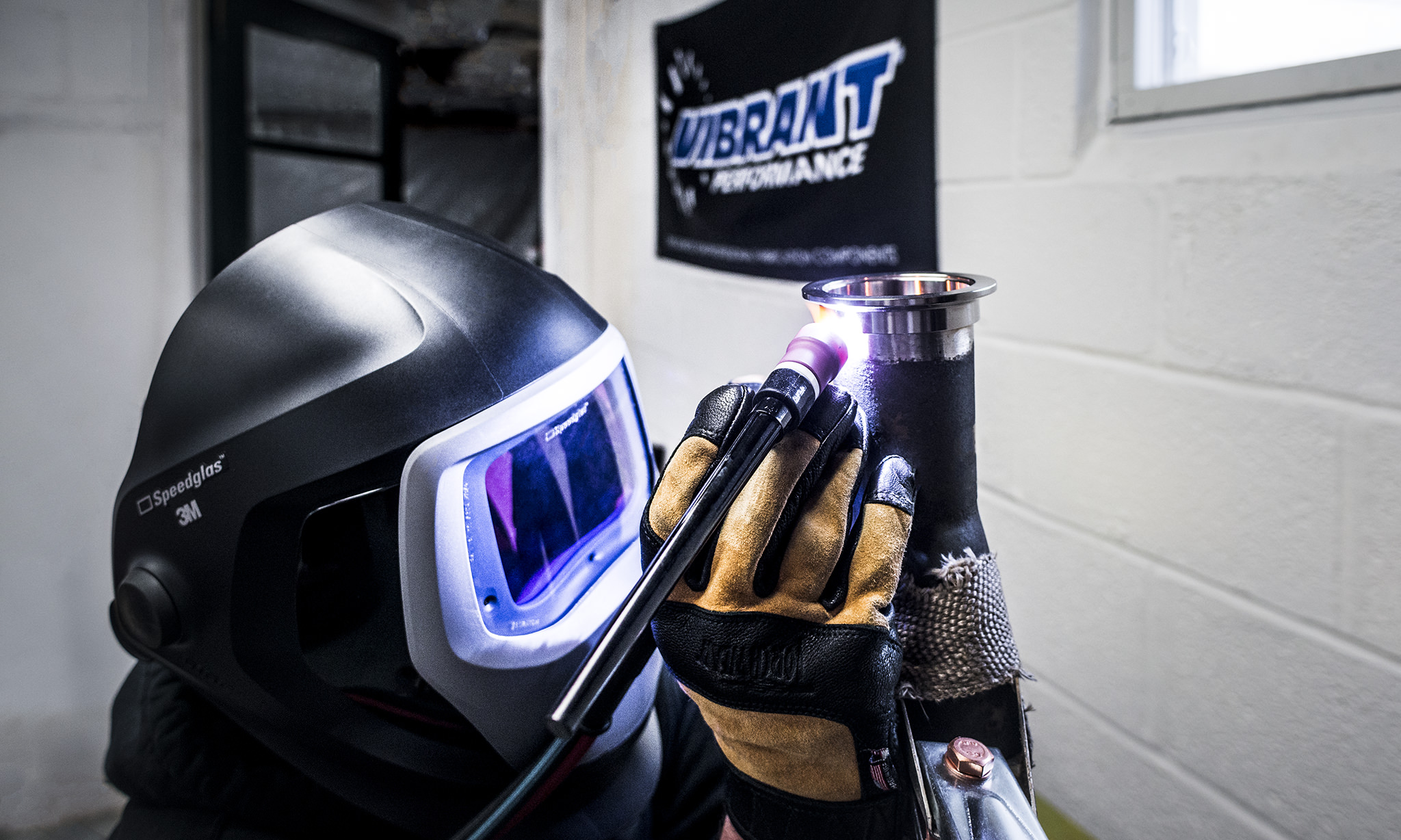When people modify a vehicle for performance, there are typically crucial goals to achieve, which act as the driving force behind the vision of the finished vehicle. Whether it’s to have the latest and greatest parts, the widest wheels with the lowest ride height, or the fastest racecar; auto enthusiasts can agree there is always an individual build goal. My goal while building my Honda Civic is to shed as much weight as possible. Throughout the initial assembly process, I scratched the surface of possible weight reduction, and since then I have continued to knock the pounds down piece by piece. My goal is not to have the lightest Civic, but to have a street-drivable lightweight Civic; this way during track days I can get the most out of the balanced car’s available power. If I did something like cut the floor out, the car would weigh a lot less but it wouldn’t exactly be rigid come track day. My mission was – and still is – to drop the weight without sacrificing other strengths of the car.

One component that has always bugged me is the stretch of stainless steel exhaust piping that stretched the entire length of the floor. It’s just an outlet for burnt exhaust gases to escape the engine and find their way to the atmosphere – preferably behind the driver’s nostrils. So why does it have to be made out of heavy steel, and why does it need to meander through a maze of power-hindering bends before it exits at the furthest rear point of the car? Along with the help of a friend, I decided to tackle this issue head-on and create my own lightweight exhaust from scratch. As stated above, the goal is to not only shave weight, but remain drivable, while increasing the exhaust flow in the process.

Enter Vibrant Performance, a one-stop-shop for performance exhaust and induction products. Founded in 1997, the company designs and produces high-quality, innovative exhaust and induction solutions. They offer bare piping in various materials, diameters, lengths, and angled bends – perfect for any fabricator trying to build a custom exhaust setup from scratch. They also offer their own line of performance race mufflers, a lightweight solution to adhere more closely with noise regulations at racetracks while granting a free-flowing straight-through design.
One of the alternative materials offered by Vibrant is lightweight T6061 aluminum. Weighing in at about one-third the weight of stainless steel, this metal’s greatest strength lies within its ability to offer high performance with a reduced weight penalty.

The Background
There are many positives to using an exhaust system crafted from T6061 aluminum where possible instead of a stainless steel variant. T6061 aluminum has high corrosion resistance due to its alloy makeup, which includes other elements like magnesium. Aluminum also has much better thermal conductivity and heat dissipation characteristics when compared to steel, which is why it can be found in the production of many radiators.
So now I know what you’re thinking… if it’s so great, why aren’t all exhausts made from of aluminum? Well, there is also a list of cons involved with using aluminum for exhaust components, especially on a street car. These include its difficulty to weld compared to stainless steel, the inability to retain rigidity once temperatures exceed 400 degrees F, and how easily it can be bent or torn in the event of impact – think soda cans.
Luckily, my friend Mark Lettieri is a talented fabricator who was more than open to the idea of welding together a custom aluminum exhaust system for me. The potential issues listed above don’t apply to how this vehicle gets used, and I don’t plan on smashing the exhaust into anything, so these weren’t much for deterrents.


The Fabrication
I brought my Civic over to Lettieri’s shop with numerous boxes of 2.5-inch aluminum Vibrant piping products in tow. We removed my Feel’s header, which he determined needed a bit of modification in order to work with the custom exhaust setup he had in mind. The stainless steel two-bolt flange on the header worked fine with my previous exhaust system, but without a solution for an aluminum two-bolt flange on the exhaust side, we decided to convert the header to a stainless steel V-band connection, which allows the two metals to be securely fastened together.



After some careful measuring, Lettieri mapped out the perfect place to splice the flange from the header’s collector and let the fireworks commence.


The result was a very straight – but not so clean – cut separating the flange from the collector. In order to clean up the surface for an ideal welding location, he sanded and filed the edge of the material to produce a completely fresh metal surface, ripe for connection to the Vibrant stainless steel V-band connector we would be using. Similar to bodywork on cars, the surface prep in fabrication is crucial to the outcome of the final product and the ultimate strength of the metal connection – weld porosity doesn’t promote any sort of longevity.


Unfortunately, a slight miscalculation by me resulted in the mating of a 2.5-inch V-band connector with a 60mm (approximately 2.35-inch) piece of the foreign market header. Unbothered by it, Lettieri began laying the first tack welds on the connector with his HTP Invertig 221 TIG Welder, eventually cleaning up the material mismatch masterfully.


With the header and connector mocked up in place, it was time to begin routing the exhaust pipe down the OEM exhaust channel in the car’s body. The first straight piece was tack welded to its aluminum V-band connector, then installed under the car for measurement purposes.



Without 3D-mapping software to help plan the necessary bends, this exhaust system was crafted using the old-school method of fabricating each piece, installing the exhaust back on the car to map out the following section, then measuring, cutting, filing, sanding and welding. While this is the tedious way to create a perfect-fitting exhaust system, it was necessary without the use of a lift.
After the straights were set up, a slight turn was required to distance the vehicle’s exhaust system from its shift linkage; two 60-degree bends cut at varying lengths were added to the design. This also proved to be the section of pipe that held the exhaust hangers.


A mockup hanger was put into place as a substitute for a more refined solution, which was fabricated at a later time.


We thought immediately following the exhaust hanger would be the optimal location to place the heaviest piece of the system – the 2.5-inch Vibrant aluminum Race Muffler. Also made from aircraft-grade T6061 aluminum, this straight-through muffler is designed to reduce decibel levels and provide ideal exhaust flow at a fraction of the weight of its stainless steel counterpart.

A remaining straight piece of tubing was tacked onto the exit of the muffler, followed by a 90-degree bend and two more angles to route the exhaust to its final location.

At this point, a host of empty boxes populated Lettieri’s shop floor as a reminder of how much work and how many different pieces it took to create the end product.



By the end of the mockup day, the masterpiece was tacked into place, and I left it with him to finish up over the course of the week.


Progress photos via Frank Lettieri
In approximately ten more hours, he was able to revise the exhaust hangers and the bends before the muffler in an effort to tuck it further under the car. He also welded new angled bends on after the muffler to clean up the exhaust’s final appearance. He then finished the fabrication by slash-cutting the exhaust exit and placing a solid bead of weld around every joint on the entire system.



The Final Product
The previous exhaust on this car was Buddy Club’s Spec II, which uses a resonated straight pipe made from 2.25-inch stainless steel material. This system weighed 19.5 pounds, just over half the weight of a 36-pound stock muffled Honda exhaust system. This exhaust lacked the necessary muffler to make this system street drivable, and packed a higher decibel rating than most local racetracks deem acceptable.



Its replacement is the new custom 2.5-inch muffled exhaust system made entirely from T6061 aluminum, which only weighs six pounds. Yes, the same six pounds as a household bag of rice or flour. That’s right, only a single pound more than one of those dusty free weights sitting in the corner of your bedroom.

There were several sections where we achieved weight savings, including the addition of the V-band connection instead of the bulky two-bolt flange with donut gasket. The exhaust system was also trimmed in length, and now exits just before the rear wheel in an effort to eliminate unnecessary material and bends over the vehicle’s rear-lower-control-arm.


The final result is better than I could have ever imagined. I was expecting to only save a few pounds going from a straight pipe to a muffled exhaust, regardless of material construction. With weight savings more than two-thirds the amount of the already lightweight Buddy Club, the quality of the Vibrant product and the beauty of Lettieri’s fabrication skills created my dream exhaust. Now it’s time to go rip the racetrack!









